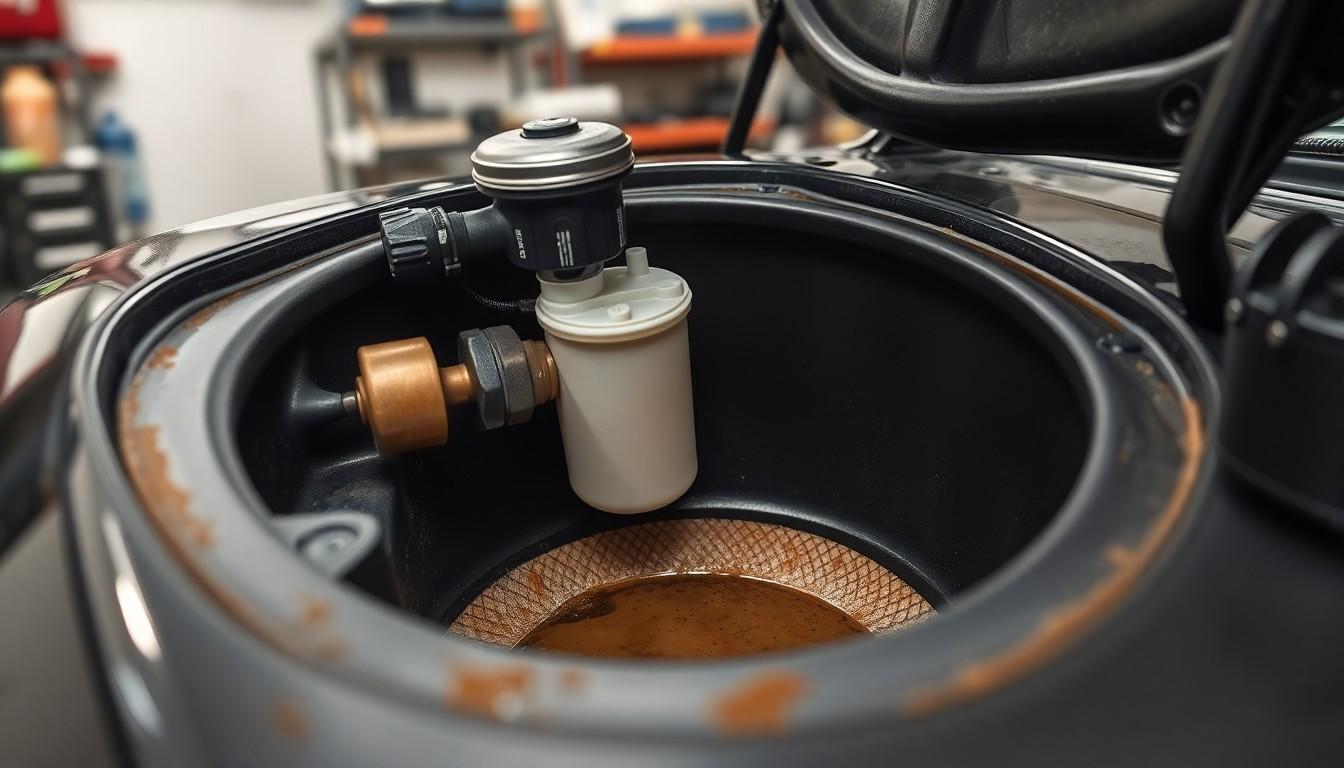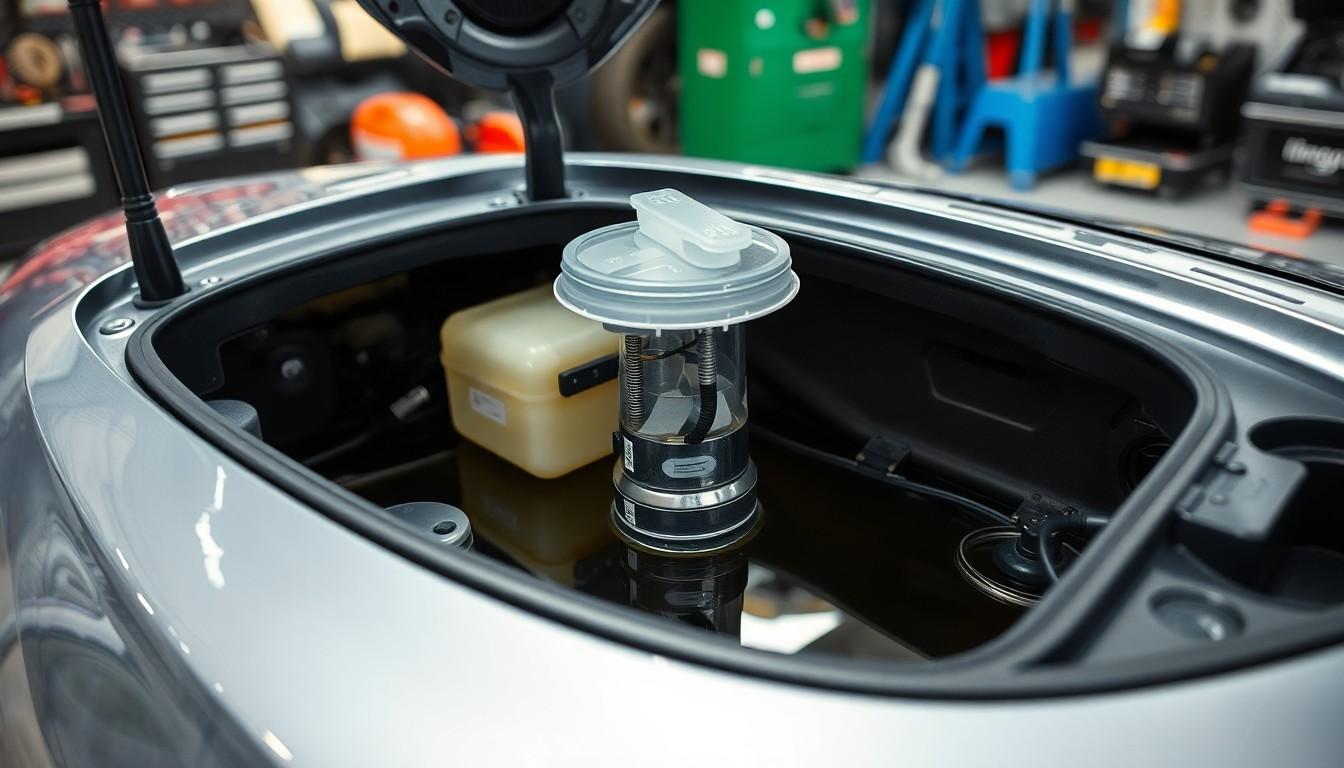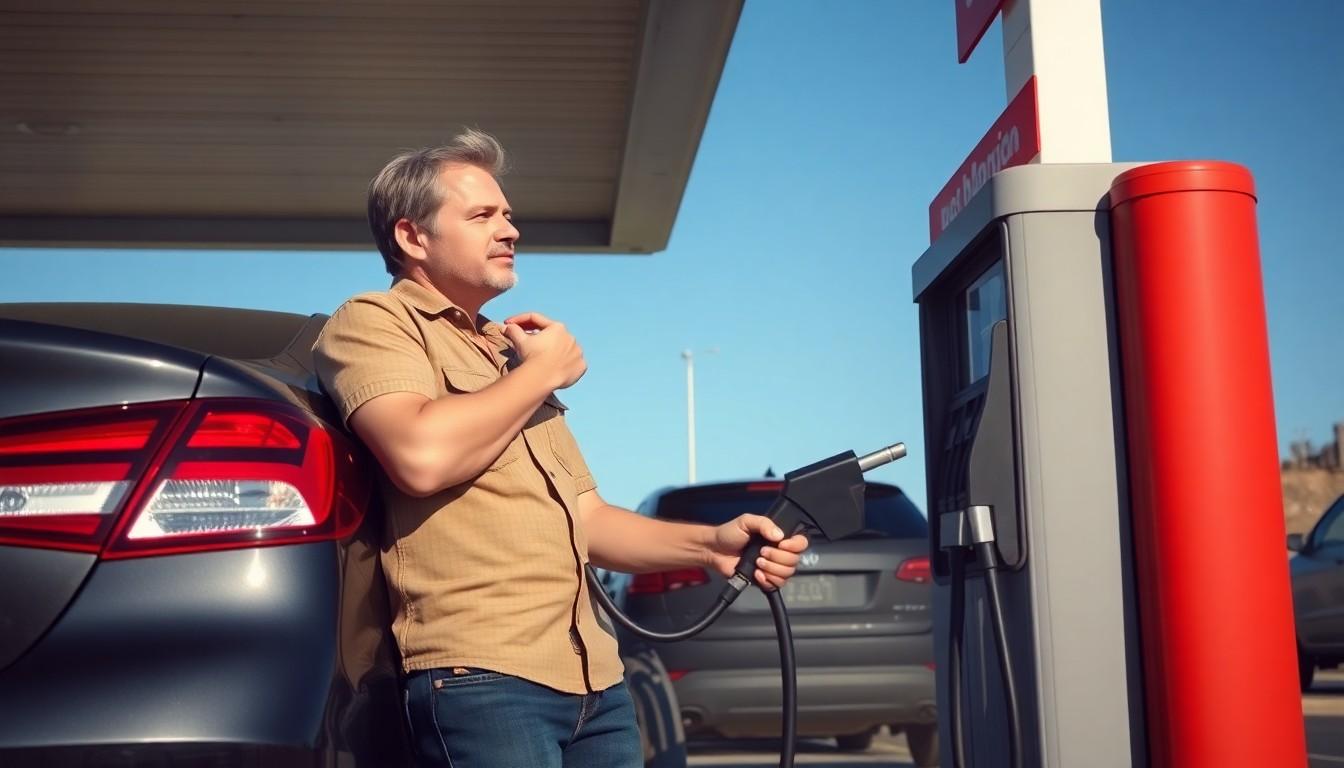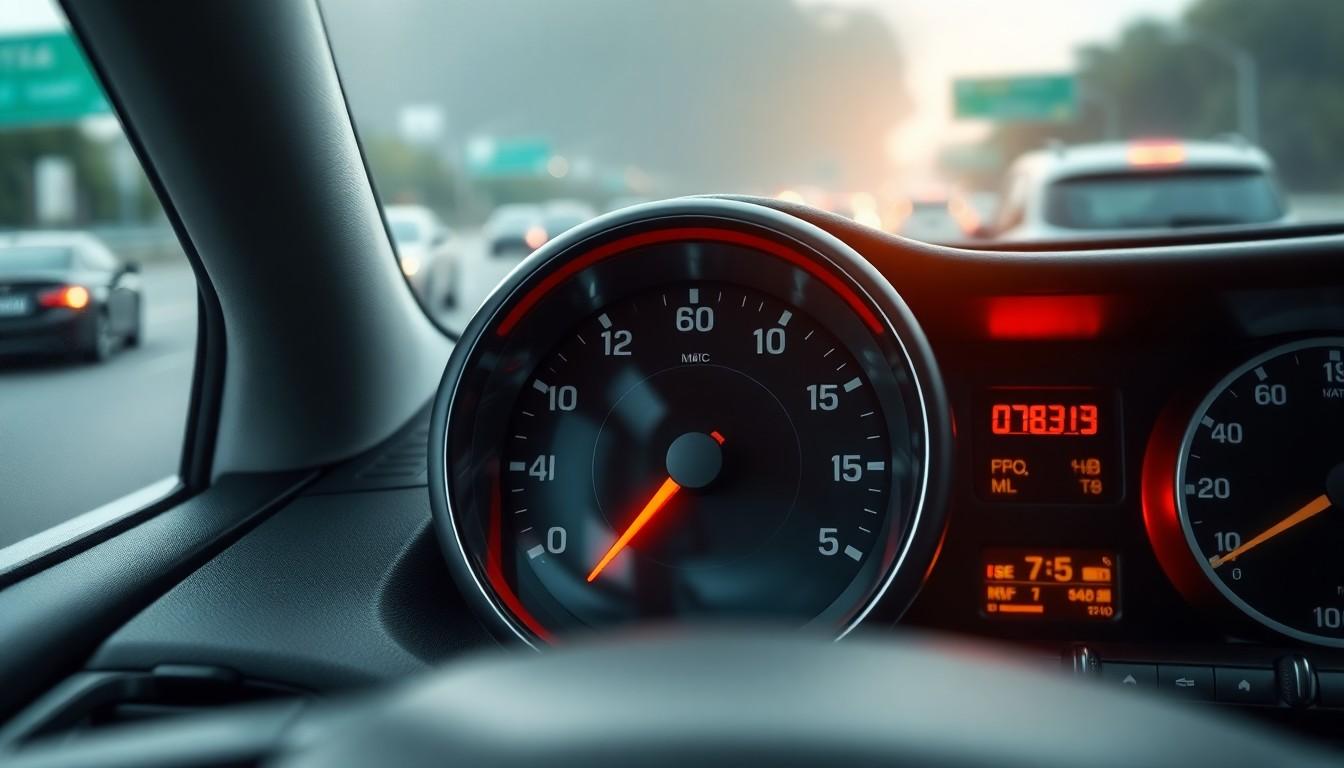We’ve all been there – watching that fuel gauge creep toward empty while mentally calculating if we can make it to our destination before running out of gas. It’s tempting to push our luck and squeeze every last mile out of the tank, especially when gas prices are high. But is this actually a smart move for your vehicle?
The truth about running your car on fumes might surprise you. While modern vehicles are built with more sophisticated fuel systems than older models, letting your gas tank run consistently low can still have consequences for your car’s performance and longevity. In this text, we’ll explore what really happens when you drive on empty and whether that risky habit might be costing you more than you think.
The Common Practice of Running on Empty
Many drivers regularly push their fuel gauge into the red zone, with 24% of Americans admitting they drive until the low fuel light comes on before filling up. This habit often stems from trying to stretch every dollar at the pump, especially when gas prices climb. Some motorists have even developed a precise calculation for exactly how many miles they can travel after the warning light appears.
Running on empty isn’t just a financial strategy – it’s become almost a game for certain drivers who pride themselves on knowing their vehicle’s limits. These fuel gamblers typically fall into distinct categories: the budget-conscious who genuinely need to wait until payday, the perpetually busy who “don’t have time” to stop, and the risk-takers who enjoy the thrill of pushing boundaries.
The psychology behind this behavior reveals interesting patterns in how we approach risk. Many drivers develop false confidence after successfully making it to a gas station multiple times on fumes. Each successful “close call” reinforces the belief that their vehicle can reliably operate well below the warning threshold, creating a potentially dangerous cycle of behavior.
With modern vehicles displaying estimated miles remaining, drivers often treat these numbers as absolute guarantees rather than the approximations they truly are. These digital readouts have inadvertently encouraged more people to drive with minimal fuel, creating a false sense of precision about exactly when they’ll run out of gas.
How a Car’s Fuel System Works

A car’s fuel system delivers gasoline from the fuel tank to the engine through an integrated network of components. This system operates continuously while driving, ensuring your engine receives the proper amount of fuel for combustion at all times.
Fuel Tank and Pump Components
The fuel tank stores gasoline while the fuel pump sends it to the engine as needed. Modern fuel pumps are typically submerged within the tank itself, where they rely on surrounding fuel for both lubrication and cooling. When fuel levels drop extremely low, the pump’s intake may draw in air instead of fuel, causing it to overheat. This lack of proper cooling and lubrication puts excessive strain on the pump, potentially leading to premature failure. The constant flow of fuel around the pump is essential for its proper function and longevity.
The Role of Fuel Filters
Fuel filters protect your engine by removing sediment and contaminants from gasoline before it reaches critical components. As your tank approaches empty, the remaining fuel often contains higher concentrations of debris and sediment that have settled at the bottom over time. These particles can quickly clog fuel filters when drawn into the system, restricting fuel flow and potentially causing engine performance issues. A clogged fuel filter requires replacement and creates additional maintenance costs that could have been avoided by maintaining adequate fuel levels in your tank.
Potential Risks of Running on Empty

Driving with an extremely low fuel level puts your vehicle at risk of serious damage and you in potentially dangerous situations. Let’s examine the exact hazards associated with frequently running your car’s gas tank to empty.
Sediment and Contaminant Issues
Debris accumulates at the bottom of your fuel tank over time, creating a layer of sediment that’s normally harmless when submerged in gasoline. When fuel levels drop critically low, this sediment gets stirred up and drawn into your vehicle’s fuel system. The fuel pump pulls these contaminants through the system, potentially clogging your fuel filter and restricting proper gasoline flow. These particles can travel further into the fuel injectors or other sensitive components, causing performance issues that require expensive repairs. Regular driving on a near-empty tank increases exposure to these contaminants, accelerating wear on your entire fuel delivery system.
Fuel Pump Damage Concerns
Your car’s fuel pump relies on gasoline for both lubrication and cooling during operation. Running on low fuel compromises these essential functions in several ways. The pump works harder to draw fuel when levels are minimal, creating excessive strain that accelerates wear on its components. Gasoline actually cools the pump during normal operation, and without sufficient fuel, the pump can overheat rapidly. Many drivers don’t realize their fuel pump might suck in air when the tank approaches empty, creating a condition called “fuel starvation” that puts additional stress on the entire system. Replacing a damaged fuel pump typically costs $400-$600, making this preventable repair particularly frustrating.
Getting Stranded: The Practical Risk
Breaking down due to an empty fuel tank creates immediate safety concerns regardless of location or time of day. Running out of gas on a busy highway puts you at risk of traffic accidents while stopping in unfamiliar or isolated areas presents personal safety hazards. Modern vehicles often maintain a small reserve after the gauge shows empty, but this reserve isn’t reliable protection against running completely dry. The inconvenience factor can’t be overlooked – having to arrange for fuel delivery or walking to a gas station carrying a container adds stress and wastes valuable time. Weather conditions can transform a simple gas shortage into a genuinely dangerous situation, particularly in extreme temperatures or remote locations.
Modern Cars vs. Older Vehicles

Modern and older vehicles respond differently to low fuel levels, with each generation of automotive technology bringing its own vulnerabilities and protections. Understanding these differences helps drivers make informed decisions about their fueling habits, regardless of what type of vehicle they drive.
Technological Improvements in Fuel Systems
Modern vehicles feature important advancements in fuel delivery systems compared to their predecessors. Electric fuel pumps in today’s cars are designed to be submerged in fuel for cooling and lubrication, making them more efficient but also more vulnerable when fuel levels drop critically low. These pumps can overheat and fail when not properly submerged, resulting in repair costs that often range from $400 to $600.
Fuel gauge accuracy has improved substantially in newer models, with digital displays providing estimated miles remaining and early warning systems alerting drivers to low fuel conditions. Even though these technological improvements, relying solely on these systems can be risky due to variations in gauge accuracy and driving conditions.
Advanced fuel filters and protective components in modern vehicles offer better defense against contaminants, but they’re still susceptible to damage when sediment from the bottom of a nearly empty tank enters the system. Older vehicles typically used mechanical fuel pumps that, while less efficient, weren’t as dependent on being constantly submerged in fuel for proper functioning.
Differences in Vulnerability
Modern cars face greater risks when running on empty primarily due to their sophisticated electric fuel pumps. These pumps rely on gasoline for cooling and lubrication, making them particularly susceptible to damage when the tank runs low. Older vehicles with mechanical fuel pumps don’t share this exact vulnerability, though they’re not immune to other low-fuel problems.
Sediment and contaminant issues affect both vehicle generations, but modern fuel injection systems are more sensitive to these particles. Debris stirred up from the bottom of a low tank can clog precision fuel injectors in newer vehicles, leading to performance issues and potentially expensive repairs. Carbureted engines in older models, while still affected by contaminants, typically have larger passages that are somewhat less prone to complete blockage.
Safety concerns exist across both vehicle types, though modern cars present additional risks. Newer vehicles may lose power steering and power brakes when they run out of fuel, significantly increasing accident potential. Running out of gas creates hazardous situations regardless of vehicle age, especially when it occurs in high-traffic areas or extreme weather conditions.
Both vehicle generations experience increased strain on fuel system components when operated with minimal fuel, but the precision engineering in modern vehicles makes them particularly vulnerable to damage. Maintaining adequate fuel levels protects critical systems in all vehicles, with modern cars requiring extra attention due to their reliance on consistent fuel submersion for proper cooling of electronic components.
The Truth About Fuel Economy

Many drivers believe that keeping their gas tank nearly empty improves fuel efficiency by reducing vehicle weight. This common misconception deserves closer examination to understand the actual impact on your car’s performance and your wallet.
Does Driving with Less Fuel Save Money?
Driving with less fuel doesn’t meaningfully save money even though popular belief. The negligible weight reduction from having less fuel provides virtually no measurable improvement in fuel economy. Modern vehicles are engineered to optimize fuel efficiency regardless of the fuel level in your tank. Any theoretical savings from reduced weight are completely overshadowed by the potential costs of fuel pump repairs, which can range from $500-$1,000 depending on your vehicle model. Rather than saving pennies on fuel efficiency, you’re risking hundreds in potential repair costs by consistently running your tank near empty.
Weight and Efficiency Considerations
The actual weight impact of fuel is minimal compared to a vehicle’s overall mass. A full 15-gallon tank weighs approximately 90 pounds, which represents only about 2-3% of the total weight of an average sedan. This tiny weight reduction produces fuel efficiency improvements too small to measure under normal driving conditions. Modern cars are designed with fuel efficiency optimization systems that function effectively regardless of tank level. The benefits you’d theoretically gain from reduced weight are completely negated by the increased stress on your fuel system. Besides, constantly searching for gas stations when running on fumes often leads to inefficient routes and unnecessary idling, which eventually consumes more fuel than maintaining a reasonable tank level would require.
Best Practices for Fuel Management

Maintaining proper fuel levels protects your vehicle’s components and ensures safe driving conditions. Implementing smart refueling habits can extend the life of your fuel system and help avoid unexpected breakdowns.
Ideal Refueling Strategies
Keeping your tank at least a quarter full serves as a practical rule of thumb for responsible vehicle ownership. Fill up your car when it reaches the quarter-tank mark rather than waiting until it’s running on fumes. This practice prevents the fuel pump from drawing in potentially harmful sediment that settles at the bottom of your tank. Regular refueling also eliminates the stress of searching for gas stations in unfamiliar areas or during emergency situations. Plan your trips with fuel availability in mind, especially when traveling through remote locations where gas stations may be scarce.
Using Fuel Gauges Effectively
Modern vehicles feature sophisticated fuel monitoring systems that require proper interpretation for maximum reliability. Pay close attention to your dashboard indicators, understanding that the distance-until-empty displays offer estimates rather than guarantees. These calculations depend on your recent driving patterns and may not account for future conditions like traffic or weather changes. Familiarize yourself with your vehicle’s exact fuel consumption patterns by tracking mileage between fill-ups. Digital fuel gauges often include warning lights that activate when approximately 2-3 gallons remain in your tank—treat this as your absolute deadline for refueling rather than a challenge to see how much further you can drive.
Conclusion
Driving on an empty tank might seem like a way to stretch your dollar but it’s not worth the risk to your vehicle’s health. The potential damage to your fuel pump and injection system far outweighs any negligible savings from reduced weight.
We recommend maintaining at least a quarter tank of fuel at all times to protect your vehicle’s components and avoid the safety hazards of being stranded. Remember that your distance-to-empty display is just an estimate not a guarantee.
Smart fuel management isn’t just about avoiding breakdowns—it’s about protecting your investment and ensuring reliable transportation. By developing good refueling habits you’ll extend your vehicle’s lifespan and avoid costly repairs down the road.
Frequently Asked Questions
Is it bad to drive with a low fuel gauge?
Yes, driving with a low fuel gauge can damage your vehicle. When fuel levels are critically low, the fuel pump may draw in air instead of gasoline, causing it to overheat and potentially fail. Additionally, low fuel levels can stir up sediment from the bottom of the tank, which may clog filters and fuel injectors, leading to engine performance issues and costly repairs.
Does driving with less gas improve fuel efficiency?
No, driving with less gas does not meaningfully improve fuel efficiency. While a lighter vehicle theoretically uses less fuel, the weight of a full tank is minimal compared to the overall weight of your vehicle. Any potential savings from reduced weight are far outweighed by the risks of damaging your fuel pump and other components, which can lead to expensive repairs.
How low can I let my fuel gauge go before refueling?
It’s recommended to keep your tank at least a quarter full at all times. Refueling when your gauge reaches the quarter mark prevents your fuel pump from drawing in sediment from the bottom of the tank and ensures it stays properly cooled and lubricated. This practice helps extend the life of your fuel system components and avoids the risk of running out of gas.
Are modern vehicles more affected by low fuel levels than older cars?
Yes, modern vehicles with electric fuel pumps are more vulnerable to damage from low fuel levels. These pumps rely on being submerged in fuel for cooling and lubrication. Older vehicles with mechanical fuel pumps are less susceptible to heat-related failures but still face issues with sediment and contaminants when fuel runs low. Modern fuel injection systems are also more sensitive to debris.
How accurate are “miles until empty” displays?
“Miles until empty” displays are estimates, not guarantees. They calculate remaining distance based on recent driving patterns and can be inaccurate if your driving conditions change. Factors like traffic, terrain, and driving style can significantly affect actual range. It’s best to treat these displays as rough guidelines and not push your vehicle to the absolute limit.
What should I do if my low fuel warning light comes on?
When your low fuel warning light illuminates, you should refuel as soon as possible. This light typically indicates you have about 30-50 miles of driving remaining, though this varies by vehicle. Don’t treat this as a challenge to see how far you can go—it’s a final warning that your vehicle needs fuel immediately to prevent damage to the fuel system.
Can running out of gas damage my car?
Yes, running out of gas can cause significant damage to your vehicle. Beyond the immediate inconvenience, it can damage the fuel pump, which relies on gasoline for cooling and lubrication. It can also cause sediment to be drawn into the fuel system, potentially clogging filters and injectors. Additionally, modern vehicles may require professional assistance to restart after running completely dry.
How can I develop better fuel management habits?
Develop better fuel management by refueling when your tank reaches quarter-full, planning trips with fuel availability in mind, and understanding your vehicle’s real-world fuel consumption. Don’t rely solely on dashboard estimates, and treat warning lights as deadlines, not suggestions. Consider using apps that locate nearby gas stations, and always fill up before long trips or when heading into unfamiliar areas.

